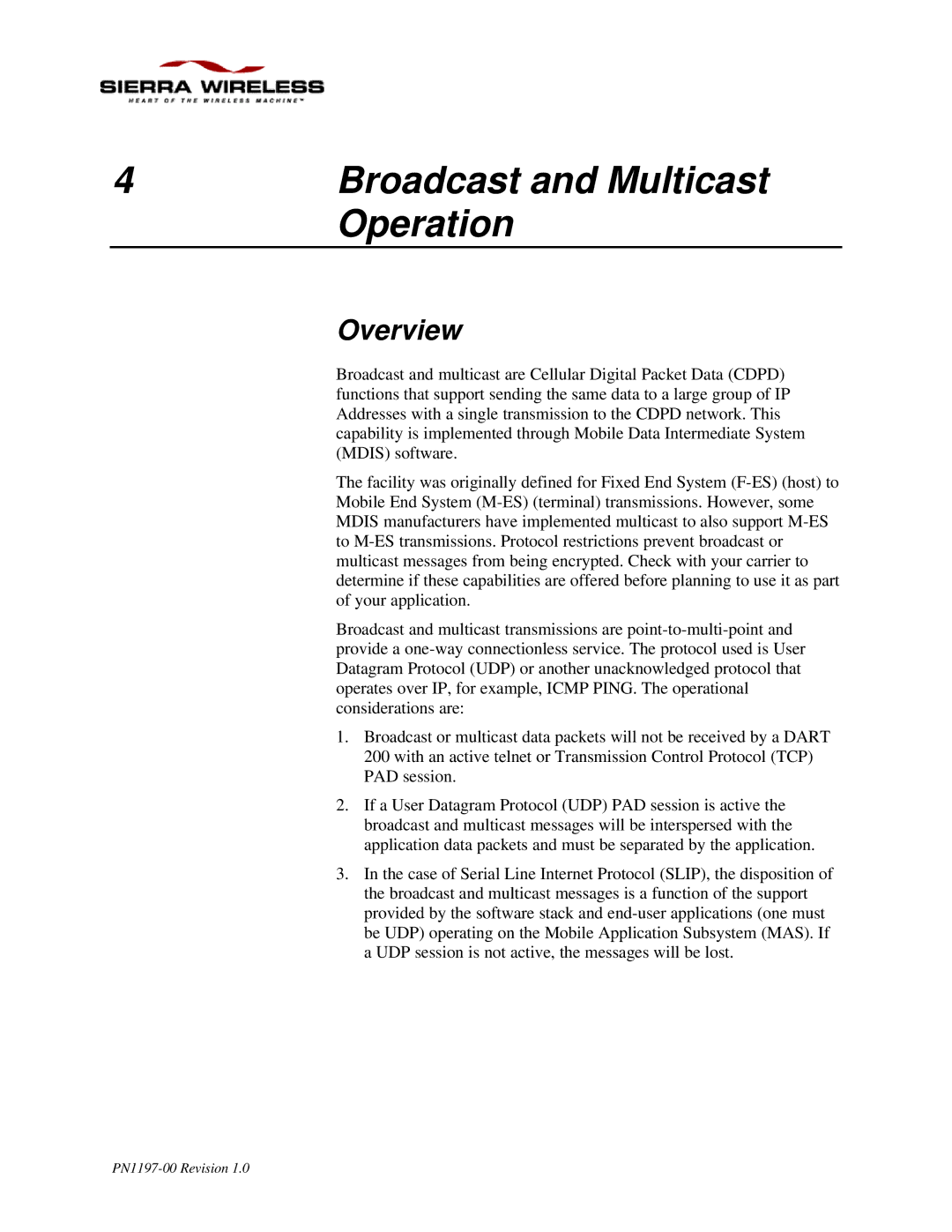4 | Broadcast and Multicast |
| Operation |
Overview
Broadcast and multicast are Cellular Digital Packet Data (CDPD) functions that support sending the same data to a large group of IP Addresses with a single transmission to the CDPD network. This capability is implemented through Mobile Data Intermediate System (MDIS) software.
The facility was originally defined for Fixed End System
Broadcast and multicast transmissions are
1.Broadcast or multicast data packets will not be received by a DART 200 with an active telnet or Transmission Control Protocol (TCP) PAD session.
2.If a User Datagram Protocol (UDP) PAD session is active the broadcast and multicast messages will be interspersed with the application data packets and must be separated by the application.
3.In the case of Serial Line Internet Protocol (SLIP), the disposition of the broadcast and multicast messages is a function of the support provided by the software stack and
